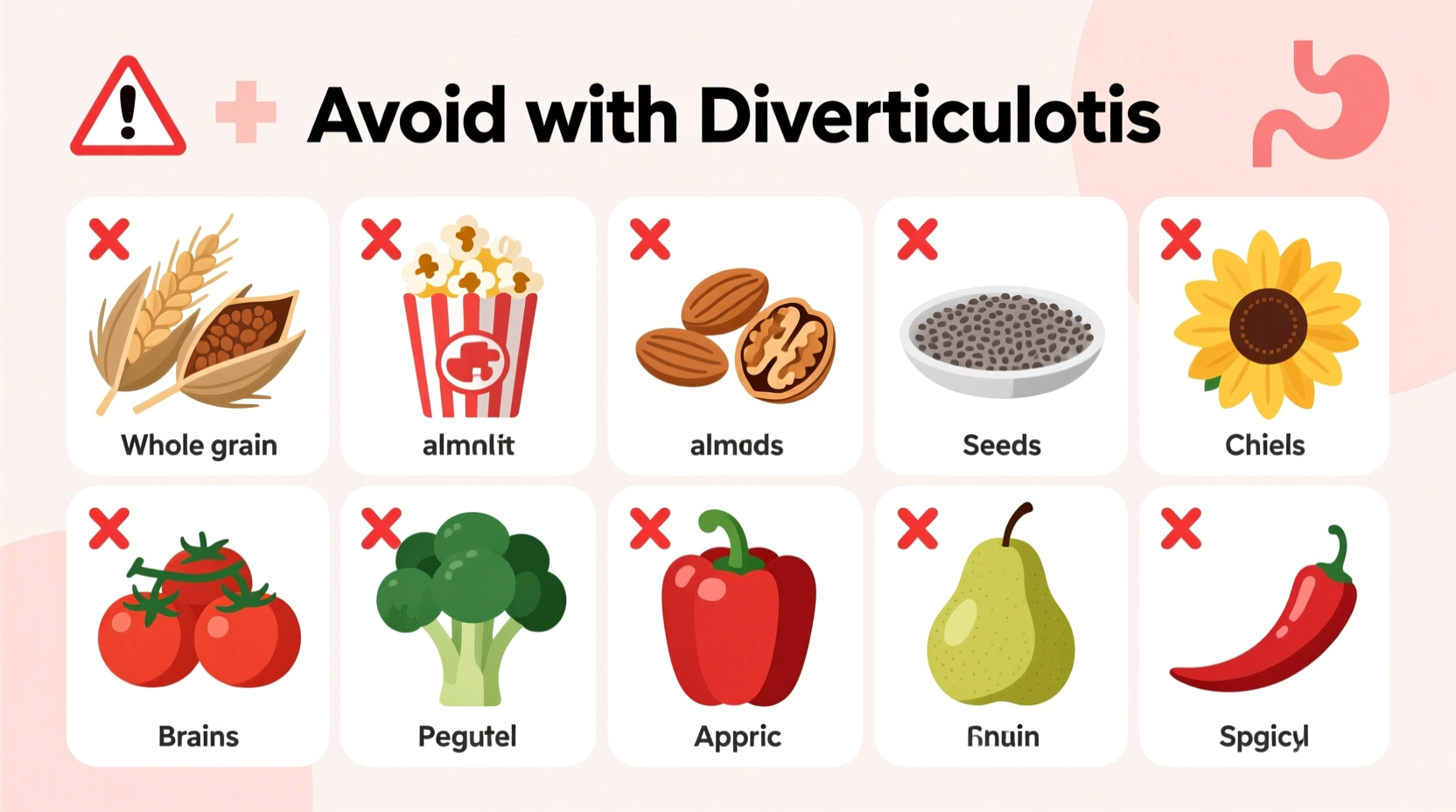If you're managing diverticulitis, current medical evidence shows you don't need to avoid nuts, seeds, or popcorn as previously believed. The top dietary focus should be on individual tolerance during flare-ups, with a high-fiber diet for prevention. This updated 2024 guide provides evidence-based recommendations from leading gastroenterology organizations to help you make informed food choices.
For individuals diagnosed with diverticulitis, navigating dietary choices can feel overwhelming. You've likely encountered conflicting advice about foods to avoid, leaving you uncertain about what's truly safe to eat. This comprehensive guide cuts through the confusion with current, evidence-based recommendations that reflect the latest medical understanding of diverticulitis management.
Understanding Diverticulitis and Why Diet Matters
Diverticulitis occurs when small pouches (diverticula) in your colon become inflamed or infected. While the exact cause remains unclear, dietary factors significantly influence both prevention and management of flare-ups. Understanding the difference between diverticulosis (presence of pouches without inflammation) and diverticulitis (inflamed or infected pouches) is crucial, as dietary approaches differ for each condition.
During active flare-ups, your digestive system needs temporary rest, while long-term prevention focuses on maintaining colon health through proper nutrition. The American Gastroenterological Association emphasizes that personalized dietary approaches work best, as individual tolerance varies significantly.
The Evolution of Diverticulitis Dietary Recommendations
Medical understanding of diverticulitis nutrition has dramatically changed over the past two decades. What was once considered dietary gospel has been overturned by rigorous research:
| Time Period | Prevailing Dietary Advice | Current Understanding |
|---|---|---|
| 1980s-2000s | Avoid all nuts, seeds, popcorn, and high-fiber foods permanently | No scientific evidence supporting this restriction |
| 2008 | First major study challenging old beliefs (JAMA Internal Medicine) | Nuts and popcorn associated with lower risk of diverticulitis |
| 2018-Present | Individualized approach based on symptom triggers | Fiber remains key for prevention; temporary low-fiber during acute flare-ups |
This timeline reflects how medical science continuously refines its understanding based on new evidence. The once-universal recommendation to avoid nuts and seeds originated from theoretical concerns rather than clinical evidence, and modern research has largely debunked this approach.
Foods to Limit During Acute Flare-Ups (Temporary Measures)
During active diverticulitis episodes, your healthcare provider will typically recommend a temporary dietary progression:
- Clear liquid diet (first 24-48 hours): Water, broth, apple juice, gelatin
- Full liquid diet (next phase): Smooth soups, yogurt, smoothies
- Low-fiber diet (as symptoms improve): White bread, refined grains, canned fruits without skins
This temporary approach gives your digestive system time to heal. The National Institute of Diabetes and Digestive and Kidney Diseases (NIDDK) recommends gradually reintroducing fiber over 4-6 weeks as symptoms resolve.

Foods Previously Restricted That Are Generally Safe
Contrary to long-standing advice, research now shows these foods don't increase diverticulitis risk:
- Nuts and seeds - A 18-year Harvard study of 47,000 men found those consuming the most nuts and popcorn had lower diverticulitis risk
- Popcorn - No evidence it triggers flare-ups; actually associated with protective benefits
- Berries with seeds - Strawberries, raspberries, and tomatoes are safe for most people
- Whole grains - Important for prevention when not in active flare-up phase
The misconception that small particles get trapped in diverticula and cause inflammation has been disproven by multiple studies, including research published in the American Journal of Clinical Nutrition.
Contextual Considerations for Individual Tolerance
While general guidelines exist, individual responses vary significantly. Certain foods may trigger symptoms for some people but not others. Consider these contextual factors:
- During active flare-ups: Even normally safe foods may cause discomfort until inflammation subsides
- Personal tolerance thresholds: Some individuals may genuinely react to specific foods
- Preparation methods: Well-cooked vegetables may be better tolerated than raw during recovery
- Portion sizes: Large quantities of high-fiber foods may overwhelm a healing system
The Mayo Clinic recommends a food diary approach to identify personal triggers rather than following blanket restrictions. Track what you eat and any symptoms for 2-4 weeks to identify patterns specific to your body's responses.
Building Your Personalized Diverticulitis Diet Plan
For long-term management and prevention, focus on these evidence-based strategies:
- Gradual fiber increase: Aim for 25-30g daily, increasing by 5g weekly to prevent gas and bloating
- Adequate hydration: Drink at least 8 glasses of water daily when increasing fiber
- Balanced meal planning: Include both soluble and insoluble fiber sources
- Regular meal timing: Consistent eating patterns support digestive regularity
Sample daily meal plan for prevention phase:
- Breakfast: Oatmeal with banana and walnuts
- Lunch: Lentil soup with whole grain bread
- Snack: Greek yogurt with berries
- Dinner: Baked salmon with roasted Brussels sprouts and quinoa
When to Consult Your Healthcare Team
Dietary guidance should complement, not replace, professional medical care. Contact your healthcare provider if you experience:
- Severe or persistent abdominal pain
- Fever above 100.4°F (38°C)
- Inability to keep liquids down
- Blood in your stool
A registered dietitian specializing in gastrointestinal conditions can help create a personalized nutrition plan that addresses your specific needs and preferences while following current medical guidelines.











 浙公网安备
33010002000092号
浙公网安备
33010002000092号 浙B2-20120091-4
浙B2-20120091-4